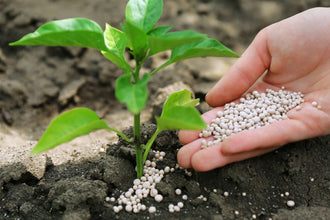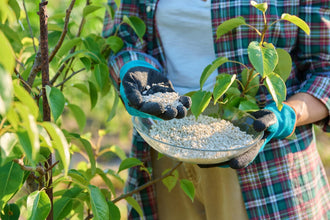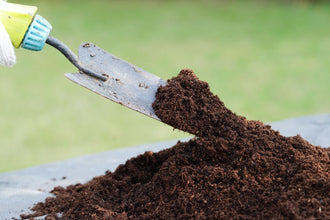
Bloom booster fertilizer transforms average gardens into stunning displays of vibrant flowers and abundant harvests. Every gardener dreams of those picture-perfect blooms that make neighbors stop and stare. The secret lies in understanding how these specialized fertilizers work and why they produce such dramatic results.
Most gardeners struggle with plants that produce plenty of green leaves but disappointing flowers. Regular fertilizers often contain too much nitrogen, which encourages leafy growth at the expense of blooms. Bloom boosters solve this problem by providing the right balance of nutrients that plants need during their flowering phase.
Understanding How Bloom Booster Fertilizer Works
The science behind bloom booster fertilizer centers on phosphorus, the middle number in the NPK ratio. While nitrogen promotes green growth and potassium strengthens roots, phosphorus triggers flower and fruit development. Plants preparing to bloom need extra phosphorus to form flower buds, develop petals, and produce seeds or fruit.
Most bloom boosters feature a low-high-moderate NPK ratio, such as 2-10-10 or 3-12-12. This formula provides minimal nitrogen to prevent excessive leaf growth while delivering maximum phosphorus for flower production. The moderate potassium content supports overall plant health and helps flowers last longer once they open.
The Phosphorus Connection
Phosphorus plays multiple roles in flower development. It helps plants transfer energy throughout their structure, supports root development, and aids in the formation of flower buds. Without adequate phosphorus, plants may produce healthy foliage but struggle to develop the energy reserves needed for spectacular blooms.
Plants absorb phosphorus differently than other nutrients. Unlike nitrogen, which moves freely through soil, phosphorus binds tightly to soil particles. This means plants can only access phosphorus that sits close to their root zones. Bloom booster fertilizer delivers this nutrient directly where plants need it most.
Timing Makes the Difference
The timing of bloom booster fertilizer application affects results dramatically. Most flowering plants benefit from bloom booster applications just as they begin forming flower buds. This usually occurs several weeks before visible flowers appear, varying by plant species and growing conditions.
Early application gives plants time to build energy reserves for flower production. Late applications may provide some benefit, but they cannot replace the foundational support that plants need during their initial flowering preparation phase.
Types of Bloom Booster Fertilizer Available
Several types of bloom booster fertilizer cater to different gardening needs and preferences. Each type offers unique advantages depending on your plants, soil conditions, and maintenance schedule.
Liquid bloom boosters provide fast-acting nutrition that plants absorb quickly through their roots. These fertilizers work well for container plants, hanging baskets, and gardens where you can control watering precisely. Most liquid formulas require dilution and application every two to four weeks during the growing season.
Granular bloom boosters release nutrients more slowly, providing steady nutrition over several months. These products work well for established garden beds where frequent applications might be impractical. Granular formulas typically need application only two to three times per growing season.
Organic vs Synthetic Options
Organic bloom booster fertilizer sources its nutrients from natural materials like bone meal, bat guano, and composted manure. These fertilizers release nutrients gradually as soil microbes break down the organic matter. Organic options improve soil health over time while providing steady nutrition for flowers.
Synthetic bloom boosters deliver precise nutrient ratios that dissolve quickly in water. These fertilizers provide predictable results and work well in controlled growing environments. Many synthetic formulas include micronutrients that support flower development alongside the primary NPK nutrients.
Specialty Formulations
Some bloom booster fertilizers target specific plant types or growing conditions. Rose fertilizers often include extra magnesium and sulfur to support the intense flowering cycles that roses produce. Orchid bloom boosters provide gentle nutrition suited to these sensitive plants' unique needs.
Water-soluble crystals dissolve completely in irrigation water, making them perfect for drip systems or foliar feeding. These concentrated formulas allow precise nutrient control and work well for greenhouse growing or hydroponic systems.
Application Methods for Best Results
Proper application of bloom booster fertilizer determines whether you achieve mediocre results or spectacular flower displays. The method you choose depends on your plant types, garden size, and personal preferences.
Soil application remains the most common method for applying bloom booster fertilizer. Mix granular formulas into the soil around plants, keeping fertilizer away from stems and foliage. Water thoroughly after application to begin nutrient release and prevent fertilizer burn.
Foliar feeding delivers nutrients directly to plant leaves, bypassing soil absorption entirely. This method works well for quick nutrient boosts or when soil conditions limit nutrient uptake. Apply foliar fertilizers during cool morning or evening hours to prevent leaf burn.
Container Plant Applications
Container plants need more frequent bloom booster fertilizer applications because nutrients wash out with regular watering. Use liquid fertilizers diluted to half strength and apply every two weeks during active growth periods. Check drainage holes regularly to ensure excess fertilizer can escape.
Large containers may benefit from slow-release granular fertilizers mixed into the potting medium. These products provide steady nutrition for months while reducing the frequency of liquid applications needed.
Garden Bed Strategies
Garden beds with established plants can handle stronger fertilizer applications spread over larger areas. Apply granular bloom booster fertilizer around the drip line of each plant, where feeder roots concentrate. Avoid placing fertilizer against plant stems to prevent burning.
Mixed plantings may need customized approaches since different plants have varying bloom booster fertilizer requirements. Group plants with similar needs together when possible, or use gentle, diluted applications that work for all plants in the area.
Common Mistakes to Avoid
Many gardeners make preventable mistakes that reduce the effectiveness of bloom booster fertilizer. Understanding these pitfalls helps you achieve better results while avoiding plant damage or nutrient waste.
Over-application ranks as the most common error with bloom booster fertilizer. More fertilizer does not equal more flowers. Excessive phosphorus can actually inhibit flower production and may prevent plants from absorbing other essential nutrients like iron and zinc.
Poor timing also reduces bloom booster effectiveness. Applying these fertilizers too early wastes nutrients before plants can use them effectively. Late applications may miss the critical window when plants build energy reserves for flower production.
Soil Testing Oversights
Skipping soil tests before using bloom booster fertilizer can lead to nutrient imbalances. Soils that already contain high phosphorus levels may not benefit from additional bloom boosters. Some plants may need other nutrients corrected before they can effectively use phosphorus for flower production.
Simple soil test kits reveal existing nutrient levels and pH conditions that affect fertilizer uptake. Professional soil tests provide more detailed information about nutrient availability and specific recommendations for your garden conditions.
Watering and pH Issues
Improper watering reduces bloom booster fertilizer effectiveness significantly. Both overwatering and underwatering prevent plants from absorbing nutrients efficiently. Consistent moisture levels support steady nutrient uptake and flower development.
Soil pH affects how plants absorb phosphorus from bloom booster fertilizer. Most flowering plants prefer slightly acidic to neutral soil pH between 6.0 and 7.0. Extremely alkaline soils may bind phosphorus tightly, making it unavailable to plants despite regular fertilizer applications.

Maximizing Your Garden's Bloom Potential
Success with bloom booster fertilizer requires more than just applying the right product at the right time. Several additional factors contribute to spectacular flowering displays that make your garden the envy of the neighborhood.
Proper plant selection sets the foundation for amazing blooms. Choose varieties known for prolific flowering in your climate zone. Native plants often bloom more reliably than exotic species because they match local growing conditions naturally.
Adequate sunlight remains essential for heavy flowering regardless of fertilizer applications. Most flowering plants need at least six hours of direct sunlight daily to produce energy for bloom development. Shade-loving plants still need bright, indirect light to support their flowering cycles.
Consistent care practices support the benefits of bloom booster fertilizer throughout the growing season. Regular watering, appropriate pruning, and pest management all contribute to healthy plants that respond well to specialized nutrition.
Soil preparation before planting creates an environment where bloom booster fertilizer can work most effectively. Well-draining soil prevents root problems that interfere with nutrient absorption. Organic matter additions improve soil structure and support beneficial microbes that help plants access nutrients.
Fancy Chicken Fertilizer: Natural Bloom Support That Builds Better Soil
Organic chicken manure fertilizer provides a gentler approach to bloom enhancement while building long-term soil health. Fancy Chicken's 4-2.5-2 NPK formula offers moderate phosphorus levels that support flower development without the harsh effects of synthetic bloom boosters. This balanced nutrition feeds plants consistently throughout their flowering cycle while creating healthier growing conditions season after season.
Steady Phosphorus Release for Extended Blooming
The phosphorus in Fancy Chicken fertilizer becomes available gradually as soil microbes break down the organic matter. This slow release prevents the nutrient spikes and crashes that synthetic fertilizers can cause. Plants receive steady phosphorus nutrition over several weeks, supporting continuous flower bud formation and extended blooming periods.
Organic phosphorus from chicken manure stays available in soil longer than synthetic versions. The organic matter holds nutrients in the root zone where plants can access them when needed. This natural buffering effect means fewer applications while maintaining consistent flower support throughout the growing season.
The 2.5 phosphorus level in Fancy Chicken fertilizer provides adequate bloom support without overwhelming plants or creating nutrient imbalances. Many synthetic bloom boosters contain phosphorus levels that can actually inhibit flowering when soil conditions aren't perfect. The moderate levels in organic chicken manure work safely in most garden situations.
Building Soil Health While Supporting Blooms
Fancy Chicken fertilizer improves soil conditions that help plants produce better flowers naturally. The organic matter feeds beneficial microbes that form partnerships with plant roots. These microbes help plants access nutrients more efficiently, including the phosphorus needed for flower development.
Here's how Fancy Chicken creates better growing conditions for flowering plants:
-
Improves soil structure around root zones, making nutrient uptake more efficient
-
Increases water retention so plants stay hydrated during bloom periods
-
Feeds beneficial microbes that help plants absorb phosphorus and other nutrients
-
Reduces soil pH gradually in alkaline soils where phosphorus becomes unavailable
-
Adds organic matter that holds nutrients longer in the root zone
-
Creates better drainage in heavy soils that can stress flowering plants
Application Strategies for Maximum Flower Production
Apply Fancy Chicken fertilizer early in the growing season to build soil fertility before plants begin their flowering cycle. Work 2-3 pounds per 100 square feet into garden beds during spring preparation. This early application gives organic matter time to begin breaking down and releasing nutrients.
For established perennial flowers, side-dress with Fancy Chicken fertilizer in early spring as new growth appears. Apply about 1/2 cup around each large plant, working it gently into the soil surface. Water lightly to begin the nutrient release process.
Container gardens benefit from Fancy Chicken mixed into potting medium at planting time. Use about 1/4 cup per gallon of potting soil for steady nutrition throughout the growing season. The slow release means less frequent feeding compared to liquid fertilizers.
Mid-season applications can extend flowering periods for annual plants and vegetables. Apply a light side-dressing of Fancy Chicken fertilizer around plants showing signs of declining flower production. This gentle boost often extends blooming into late fall.
Combining with Other Garden Practices
Fancy Chicken fertilizer works best when combined with good garden management practices. Consistent watering helps plants absorb organic nutrients more effectively. Mulching around plants helps retain soil moisture while slowly adding more organic matter to feed soil microbes.
Deadheading spent flowers redirects plant energy into producing more blooms rather than seeds. This practice, combined with steady organic nutrition from Fancy Chicken fertilizer, often doubles flowering periods compared to unfed plants.
Soil pH testing helps determine if plants can access the phosphorus in organic fertilizers effectively. Most flowering plants prefer slightly acidic to neutral soil. Adding organic matter from chicken manure gradually improves pH conditions in alkaline soils.
Create Gardens That Bloom All Season Long
Beautiful flowers don't happen by accident. They result from providing plants with the right nutrition at the right time while building soil conditions that support healthy growth. The combination of proper fertilizing, good growing practices, and quality organic products creates gardens that produce stunning displays year after year.
Your flowering plants deserve nutrition that supports both immediate blooms and long-term soil health. Fancy Chicken fertilizer provides the balanced approach that feeds plants while improving growing conditions naturally. Give your garden the organic foundation it needs to produce the kind of spectacular flower displays that make gardening truly rewarding with Fancy Chicken's time-tested formula.








